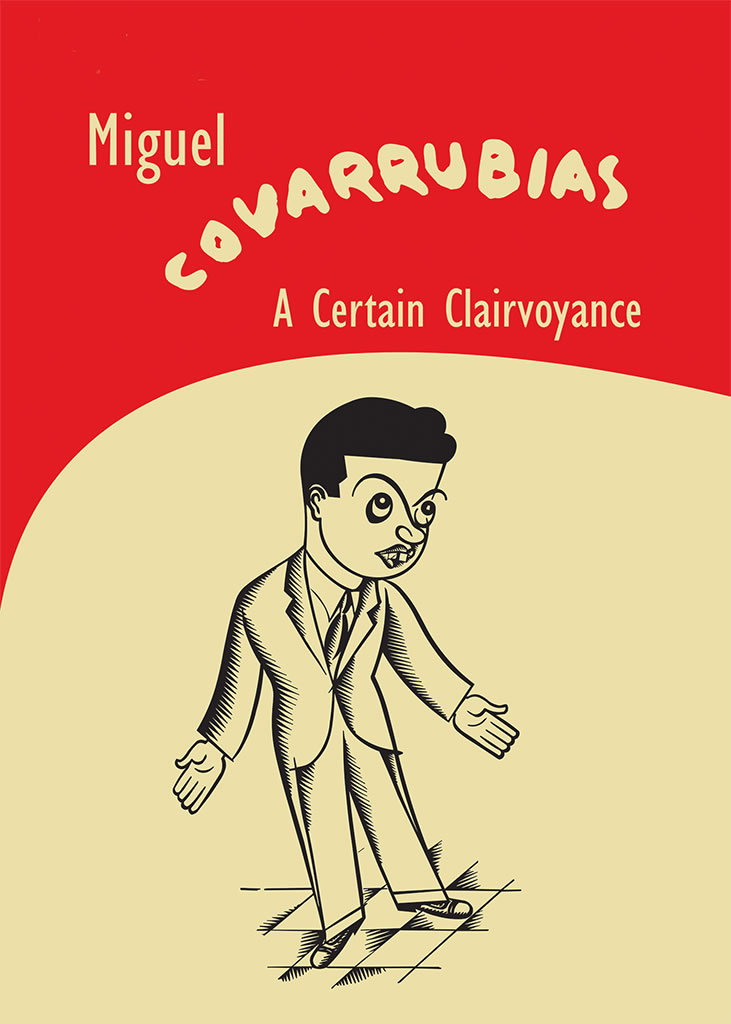Miguel Covarrubias
A Certain Clairvoyance
October 19, 2004 – April 24, 2005
The University of Texas at Austin's Harry Ransom Center celebrates the centennial of Mexican artist Miguel Covarrubias's birth with a commemorative exhibition "Miguel Covarrubias: A Certain Clairvoyance" from Oct. 19 through April 24, 2005, in the Ransom Center Galleries.
Drawn from the Ransom Center's Nickolas Muray Collection of Mexican Art and other Ransom Center collections, the exhibition features more than 100 works and focuses on Covarrubias's celebrity caricatures, paintings, books and book illustrations. A selection of work by some of the pioneering artists of celebrity caricature and Covarrubias's contemporaries at Vanity Fair and the New Yorker will accompany Covarrubias's works. The exhibition also features paintings and drawings by Frida Kahlo, Diego Rivera, Rufino Tamayo, Roberto Montenegro and others in Covarrubias's important artistic circle of friends. Muray's lifelong friendship with Covarrubias's circle of fellow artists allowed him to collect these numerous works of modern Mexican art.
Since Covarrubias's death in 1957, his work has enjoyed only five major exhibitions in this hemisphere, including three in Mexico and two in the United States. The first major showing of Covarrubias's work in the United States appeared in 1984 at the Smithsonian's National Portrait Gallery, focusing exclusively on his caricatures. In 2000, the Mexican Museum in San Francisco presented the exhibition "Covarrubias: The Rosa and Miguel Covarrubias Collection," featuring works by Covarrubias as well as the husband and wife's private collection of Mexican pre-conquest artifacts, photographs, ceramic ware and works by other Mexican artists.
"The scope of Miguel Covarrubias's career is remarkable and in many ways reflects the cultural shifts and restless spirit of the last century," said Peter Mears, curator of "Miguel Covarrubias: A Certain Clairvoyance" and the Ransom Center's Art Collection. "Through his artwork, books and book illustrations, this exhibition calls attention to the flowering of cultural relations between the United States and Mexico during the 1920s and Harlem's spirited Renaissance of the same time period. It sheds historic light on the amazing discoveries and unearthing of ancient Olmec and Mayan art and touches on the camaraderie shared between Covarrubias and an important circle of modern Mexican artists."
Covarrubias (1904-1957) is internationally recognized today as a key participant in the cultural exchange between his native Mexico and the United States after World War I.
After his arrival in New York City in 1923, Covarrubias's artistic potential was quickly recognized by the novelist and influential critic Carl Van Vechten as well as Vanity Fair's Editor Frank Crowninshield, a man of impeccable taste and a champion of modernist trends in New York society.
It was Van Vechten who said in 1925, "From the beginning I was amazed at [Covarrubias's] ability to size up a person on a blank sheet of paper at once; there was a certain clairvoyance in this."
One of Covarrubias's most critical successes was the "Impossible Interview" series for Vanity Fair. Scripted by Corey Ford and illustrated by Covarrubias, the "Impossible Interview," as the title suggests, paired a variety of newsworthy people from opposite ends of the social and political spectrums, such as movie star Clark Gable vs. the Prince of Wales, mob boss Al Capone vs. Chief Justice Charles Evans Hughes, Louisiana Governor Huey Long vs. Italian dictator Benito Mussolini and movie star Marlene Dietrich vs. conservative Senator Smith Wildman Brookhart. Covarrubias's work for Vanity Fair brought him recognition and fame. With his work in high demand, Covarrubias also drew numerous caricatures for newspapers and magazines, including the New Yorker.
Covarrubias was also a writer and used his exceptional artistic talent to illustrate his own books as well as books by other authors. His first book, "The Prince of Wales and other Famous Americans," established him as one of New York City's leading modern caricaturists. His illustrations for W. C. Handy's "Blues: An Anthology" (1926), Langston Hughes's first book of verse, "The Weary Blues" (1926), and his own book, "Negro Drawings" (1927), were created in the new spirit that arose out of Harlem's Renaissance.
Covarrubias also studied and wrote about non-Western cultures. This interest led him to Bali, where a Guggenheim Fellowship allowed him to study and write a book on the island's culture.
In the mid-1930s, Covarrubias returned to Mexico to live with his wife Rosa Rolanda. The couple had met in New York City where she was a respected modern dancer. Their home in Tizapán, just outside Mexico City, became a famous international stopover for artists, similar to Virginia Woolf's home in Bloomsbury and Gertrude Stein's in Paris.
Covarrubias turned his attention and energies to researching the ancient cultures of the Americas, particularly those in Mexico. He became a leading anthropologist, ethnologist and educator during the latter part of his career. He taught at the National School of Anthropology and History in the 1940s and 1950s, and as head of the Department of Dance at the National Institute of Fine Arts, he introduced modern dance to Mexico City's audiences.
Accompanying the exhibition is the book "The Covarrubias Circle: The Nickolas Muray Collection of Mexican Art," co-published by the Ransom Center and University of Texas Press. The publication includes major essays on Covarrubias and Muray, featuring color illustrations of the art in Muray's collection of Mexican modernists, notably works by Frida Kahlo, Guillermo Meza, Roberto Montenegro, Rafael Navarro, Juan Soriano and Rufino Tamayo.
The publication illustrates the transgression of generic boundaries and cross fertilization among artists working in different media, from painting and photography to dance and ethnography that gave modernism its freshness and energy. It also demonstrates that American modernism was thoroughly infused with a fervor for all things Mexican, of which Covarrubias was a principal proponent.
"Miguel Covarrubias's artistic talent, energy and intellect wrought an extraordinary range of lifetime achievements," said Mears. "He truly was Mexico's 20th-century Renaissance man."
The Ransom Center is deeply grateful to SBC for underwriting Miguel Covarrubias: A Certain Clairvoyance, which demonstrates SBC's support for initiatives that enhance education and community vitality.


